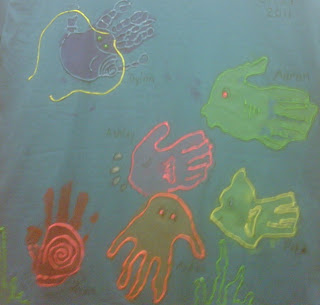Surfing around the "blogosphere" is a great way to come up with some new ideas - and some motivation! When the summertime first begins, it's easy to forget about deadlines and timetables and just kick back ... but then, sometime down the road into summer, I always regret the time and opportunities missed for some learning fun!
This year, I decided to start a running list of fun things to do that would keep a child's skills active ... here's what I have so far: (and I "borrowed" extensively from other blogs, but didn't keep track :( - if one of these ideas is mentioned in your blog, or you have an idea to add, please add a link in comments with your URL! Thanks!)

1. Write the story of yourself ... with illustrations! Staple together some computer paper and make a cover - then fill in the pages with your OWN biography ... start with you as a baby and add in some of your big milestones - use photos or drawings and some labels or sentences (written or dictated!) - it will be a KEEPER!
2. Make some mail and send it - a card for a far-away cousin or someone having a special birthday! Draw, cut, glue - make it interesting! In fact, you could get some cards done now for future birthdays and set them aside for mailing later :)
3. Design a new project or toy - save your recycling for a few days and brainstorm what sort of art project you want to do - maybe you will use different objects to print-paint or use some craft glue to assemble something really awesome!
4. Make a summer dessert - ask a grown-up to help you measure, cut and mix things to make something tasty to eat! Dividing up some graham crackers and chocolate bars for S'mores could be math practice!! Work in some counting and some planning skills!
5. Read a book - with a friend! Find a buddy and get two copies of a book - try the library or trade with a neighbor - then read and get together to discuss. You could ask each other questions or just share your favorite part!
6. Make a map of your neighborhood - use some markers and pictures or magazine cut-outs and plan out the roads and buildings in your area ... use symbols, shapes, lines, etc. to make it cool!
7. Take a container and find all the loose change in your house - put it all together and then COUNT it all up - divide it into different coin piles, make patterns with the coins, towers of coins - and then figure out what to do with it all!
8. Make a collage of all things you LOVE - take some magazines and look through for foods, toys, colors, activites, etc. and take time cutting and gluing them all on a piece of paper or cardboard!
9. Read a book about something NEW - go to the library or bookstore and look for something you haven't read about - nature stories, space, people from sports or history or maybe a different culture - fiction or non-fiction!
10. Make your OWN list of fun things to do - check your newspaper and local websites - use your imagination and HAVE FUN!





















































